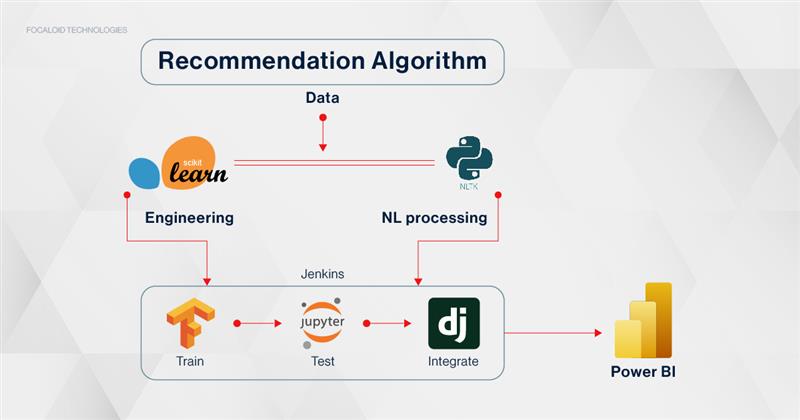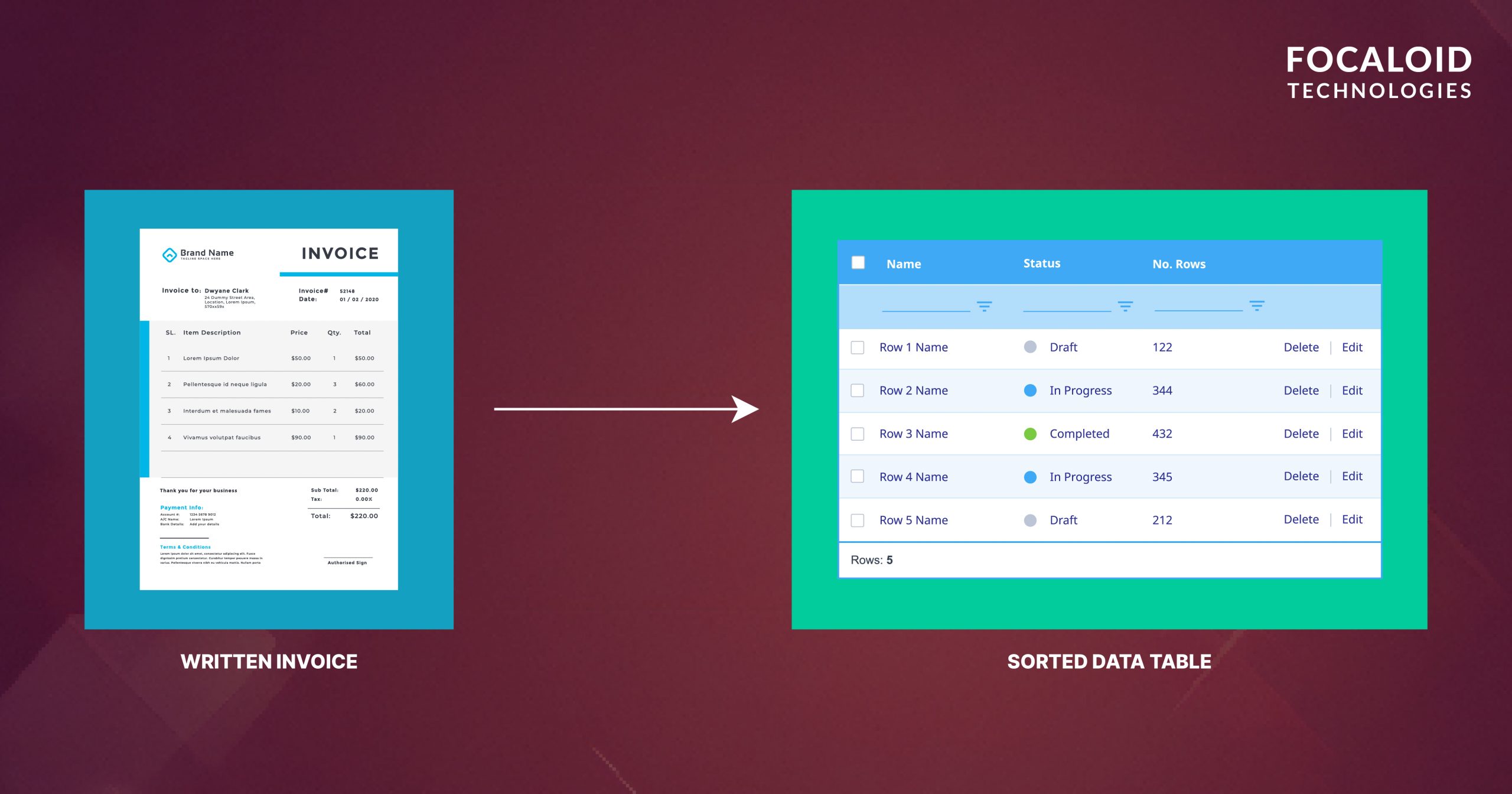Digital Transformation |
How to Lead the Digital Transformation Game
01/08/2022
How to Lead the Digital Transformation Game
Change is inevitable. No matter how difficult it is, we must adapt to change to evolve and survive. One will never know if the grass is greener on the other side. Similarly, businesses must continue evolving to compete and meet the ever-changing requirements of the market with a vision to generate greater revenues.
Digitization of the business landscape has rendered the field somewhat unpredictable for businesses. However if one minutely observes the digital trends that are engendering the dynamism of leading global businesses that are rapidly permeating across business cultures, it will no longer seem indiscernible. Thankfully disruptive technologies like AI and Machine Learning provide businesses with the opportunity to leverage data and have a fair idea about the path of transformation they are about to navigate. Hence digital transformation is of paramount importance to enterprises when it comes to adapting to the continually evolving demands of the current consumers and markets.
What is Digital Transformation?
The phenomenon of digital transformation can be compared to the industrial revolution of the post-industrial era because of its immense impact on the change of business practices across the globe. This transformation can be defined as a process of restructuring organizational operations by leveraging the impact of technology on business processes, corporate models, and internal structural hierarchies. While having meetings on digital platforms such as Google Meet or Zoom is a part of digital transformation, the entire phenomenon of how digital transformation can be leveraged by businesses of all kinds is much larger than that.
The very essence of digital transformation requires understanding the exigencies of the business to identify the catalysts of change. Moreover, digital transformation is not just about the implementation of technologies. It is about scrutinizing business strategies through the lens of technical possibilities around you and how they can be instrumentalized to expand business opportunities, improve productivity, and propel revenue generation.
Key Elements of Digital Transformation Strategy
As technology continues to evolve rapidly, dynamic businesses continue to adapt to the changing terrain with the goal to gain a competitive edge. However, the key to successful utilization of technology entails developing a comprehensive digital transformation strategy that caters to all the diversified needs of the business.
There are three essential realms of business operations that can be hugely impacted by digital transformation strategies in unique ways. These domains are discussed in the paragraphs below:
Technology
The advent of technology has eternally changed how business is conducted in today’s day and age. Modern innovations such as the Internet of Things (IoT), cloud computing, edge computing, artificial intelligence, machine learning, and blockchain, to name a few, are facilitating automation in businesses. This has also consequently resulted in the rise of sectors such as E-commerce, Fintech, Edtech, Medtech, et al.
Technologies are continuously evolving and these solutions are here to stay. Hence depending upon the requirements of your business you may be looking for technological solutions to integrate into your diurnal business processes. However, the implementation of new technologies in businesses can be hectic and time-consuming. Digital transformation entails overhauling an entire system and modernizing it. Hence carefully select the technology you wish to implement in your business and reach out to technical experts in case of any assistance.
Data
Data is the new king in the post-industrial era where services and businesses are leveraging the potential of Big Data, Data Sciences, and Data Analytics to tap into innumerable possibilities to optimize marketing and drive sales. Technology and Data go hand in hand when it comes to digital transformation. This is because you need to leverage technological solutions to understand and derive insights from relevant data sources.
Customer feedback is a very important source of data for business. Today digital marketing techniques create customer persona from user information to categorize behavioral profiles of potential customers, understand purchasing patterns, interests, etc. Hence businesses need to evaluate and develop a robust and intuitive digital transformation game utilizing data as well. Besides, data is key to consumers and mobile or web users. With a rising number of data leaks and breaches, securitization data stored both physically and online is of paramount significance for both, people and businesses.
Process
One of the key factors to understanding and leveraging this process of digital transformation is the fact that you cannot integrate new technologies with old processes in place. They do not increase the efficiency of the business and create added limitations on the technological frontiers. To reap the benefits of digital transformation to its truest potential you must focus on the processes and not just the outputs.
Reorganizing business processes can include streamlining professional endeavors and operationalizing teams to create efficient, cross-functional processes, restructuring existing processes to accommodate any newly adopted technologies, introducing backend systems, streaming project pipelines, and rethinking strategic decisions about customer engagement, among others. The process entails encapsulating both data and technologies to meet the needs of a business in both the short term and the long term.
The strategy that creates a roadmap for the implementation of technology into business processes to address and resolve business objectives and goals is known as a digital transformation strategy. Today business leaders have a myriad of technological solutions to add value to their enterprise and render a seamless customer experience.
Steps to Lead the Digital Transformation Game
There are countless processes a business can undertake to master the Digital Transformation game. However, not all of these are suitable for businesses across all domains. A few of the integral steps that help benefit most businesses are discussed in the paragraphs below:
Assess your digital maturity
The first step of digital transformation is to analyze where your digital maturity is. This can be narrowed down to the business’s highest performing sector, product, service, or region. This acts as a pedestal for developing a digital transformation strategy. Next, it is recommended to perform sufficient company-centric research and understand the markets. Accumulating customer or user information is also particularly integral to this process of realizing the digital maturity of a business.
Envision your goals and objectives
To successfully integrate technology into your business processes a clear idea of the goals and objectives is necessary. This helps identify strategic gaps between the business’s current practices and objectives so that they can be filled in with the optimum use of new technological systems. Many businesses today use data and insights from social media campaigns or app user behavior and leverage it to create strategic goals and milestones in almost all departments of the organization.
Understand your options
You should be aware of what digital solutions are available in the market today that are relevant to your business. These can include backend management systems, content management software, invoicing and billing systems, trading apps, payment gateways, translation APIs, et al. Choosing the right set of technological advancements or tools helps businesses optimize decision-making processes and meets the needs of the users and the market.
Chart out a roadmap
When a business charts out a technology roadmap it provides an all-encompassing perspective on how to approach digital transformation strategies. The roadmap also labels all the major milestones and the deadlines within which they need to be completed. In a way, this is an end-to-end plan for modern businesses to meet all the goals and objectives without incurring any dead time with added efficiency.
Training new talents
Businesses must also realize that successful digital transformation is contingent on adept and efficient employees leveraging modern-age technology. While many new recruits are capable to handle technology or at least have the technical know-how, not all the talents know all the various software, platform, and tools used by a business. Hence it is crucial to provide all the employees with the opportunity to continually learn and adapt to modern technological solutions used by the industries today. This is one of the most crucial pillars of leading the digital transformation game.
Adapt to agile methodology
A flexible and agile methodology goes hand in hand with digital transformation, especially for businesses. An agile module includes collaboration, dynamism, and transparency in all stages of product development or project management cycle, which in turn helps the system function seamlessly while adapting to the continually altering circumstances. This method enables businesses to focus on core tasks, navigate and mitigate risks, improve productivity, decrease time consumption and stimulate innovation.
Consider Outsourcing
While many businesses worldwide are taking a turn toward digital transformation. This trend is much deeper than enforcing hybrid workplaces and taking video meetings. Thus, not all businesses are equipped to deal with all the technological needs of the business. Outsourcing this process of digital transformation to a leading technology consulting firm such as Focaloid Technologies can help businesses maintain their core focus on business processes while the technology for the business is developed offshore. This is highly cost-effective, less time-consuming, and improves the overall productivity of the business.
Published:
Share:




